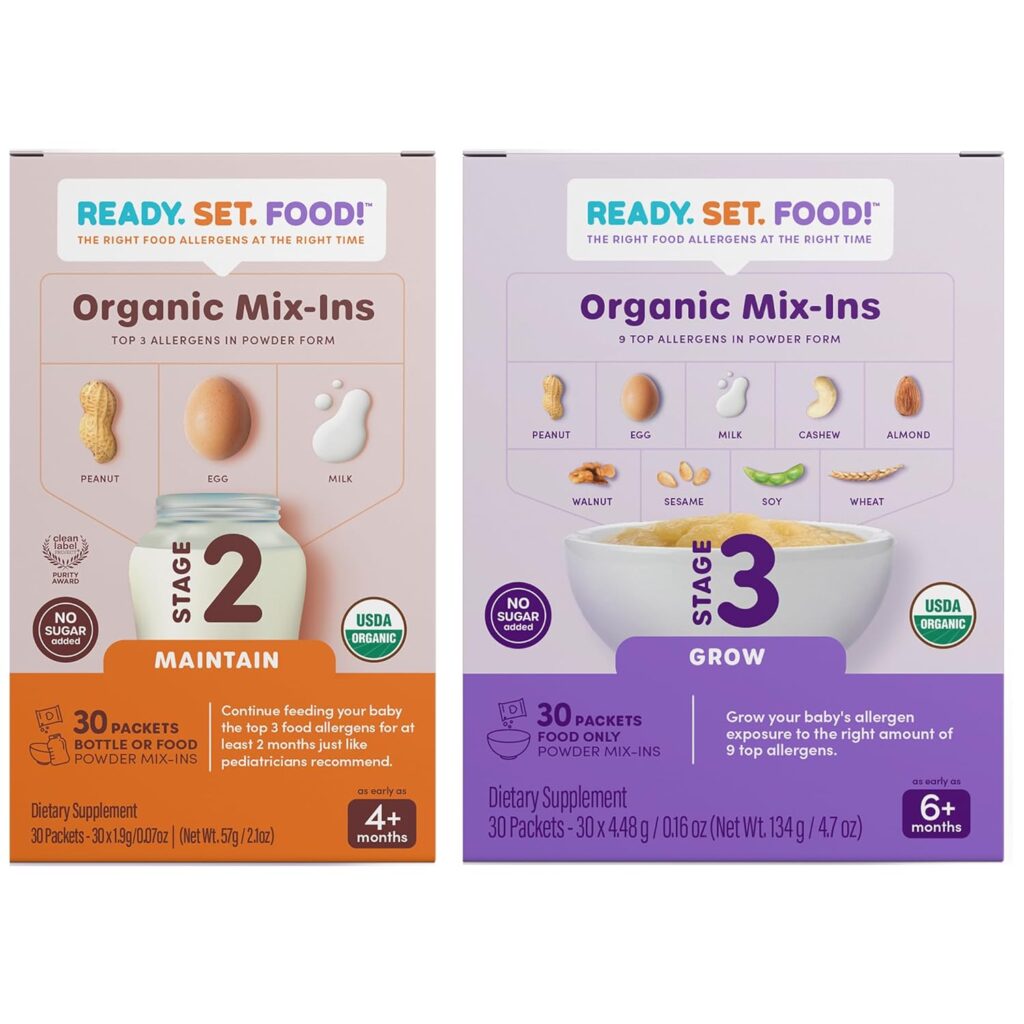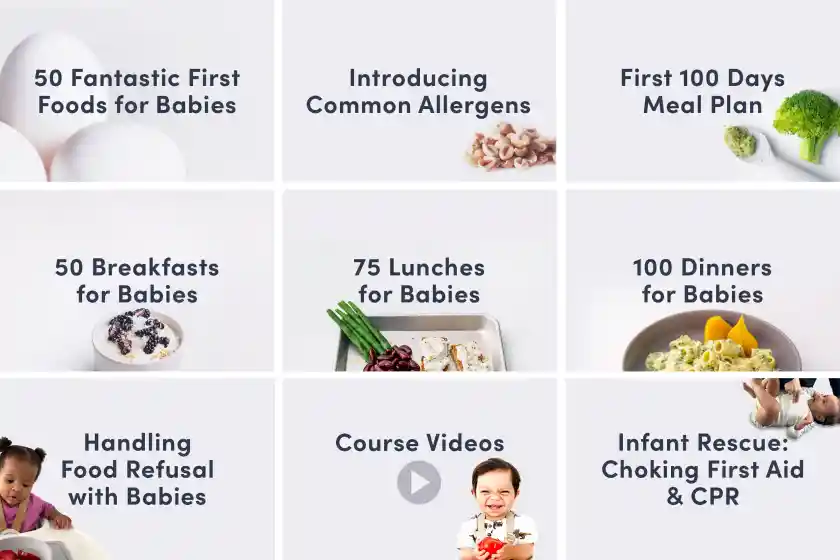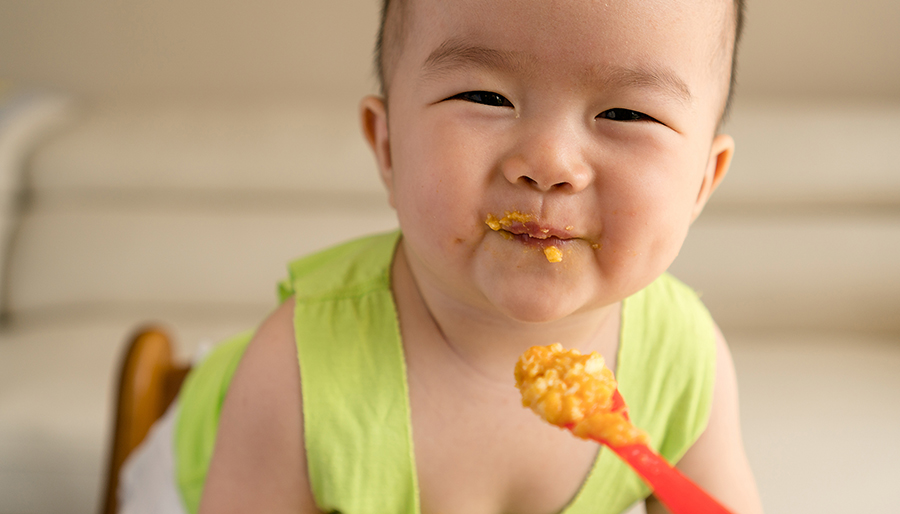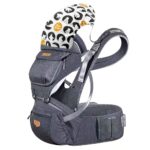Introducing solid foods to babies with allergies requires a cautious approach. Start with single-ingredient foods every three to five days to monitor reactions.
Navigating the journey of solid food introduction for babies with allergies can be challenging for parents. The process demands attention and patience, as each new food carries the potential for an allergic response. For a safe transition, it’s crucial to introduce solids gradually, focusing on one food at a time.
This strategy allows parents to identify and manage any adverse reactions with minimal risk. It’s important to maintain a varied diet, integrating new foods alongside tried-and-tested safe options. Keeping a food diary can be invaluable, as it helps track what has been introduced and notes any reactions. Consulting with a pediatrician or allergist can also provide personalized guidance tailored to your baby’s specific needs. With careful planning and observation, parents can successfully manage their baby’s dietary expansion while minimizing the risk of allergic reactions.
Introduction To Infant Allergies And Solid Foods
Starting solid foods is a major step for any baby. If allergies are a concern, this phase needs extra care. Allergies can show up when new foods are introduced. It’s crucial to know how to do this safely.

Identifying Potential Allergies
Knowing the signs of allergies helps protect your baby. Common symptoms include rash, hives, itching, swelling, or trouble breathing. Mild reactions might involve a little rash or slight discomfort.
| Sign | Description | Action |
|---|---|---|
| Rash | Red, itchy bumps on skin | Monitor closely |
| Hives | Larger red, itchy bumps | Consult doctor |
| Swelling | Swelling around eyes, lips | Seek immediate care |
| Breathing Issues | Difficulty in breathing, wheezing | Call emergency services |
Importance Of Careful Introduction
Introducing solids carefully is key to identifying allergies. Start with small amounts of one food at a time. This method helps pinpoint any allergies.
- Begin with low-allergy foods like rice or oat cereals.
- Introduce one new food every three to five days.
- Watch for any signs of reaction.
- Keep a diary of foods introduced and reactions noted.
Preparation Before Starting Solids
Embarking on the journey of introducing solids to your baby can be both exciting and nerve-wracking, especially if allergies are a concern. Preparation is key. Taking the right steps before starting can help ensure a safe and positive experience for you and your little one.
Understanding Your Baby’s Allergy Risks
Know the signs of allergies to watch for when starting new foods. These can include skin reactions, digestive issues, or respiratory symptoms.
Family history plays a part in your baby’s risk of allergies. If you or your partner have allergies, your baby might have a higher chance too.
Common allergenic foods include cow’s milk, eggs, peanuts, tree nuts, soy, wheat, fish, and shellfish. Knowing these can guide your introduction plan.
Creating A Feeding Plan With Your Pediatrician
Consulting with your pediatrician is a crucial step in the process. They can provide personalized advice and support.
- Discuss your baby’s individual risk factors with your pediatrician.
- Create a detailed feeding plan that includes what foods to introduce and when.
- Learn how to introduce one food at a time and in small amounts to monitor for any reactions.
- Plan for follow-up visits to assess your baby’s reactions to new foods and adjust the plan as necessary.
First Foods To Consider
Starting solid foods is an exciting milestone for parents and babies alike. For those with allergies, this stage requires extra care. The key is to introduce foods that are less likely to cause allergic reactions. Focus on simple, single-ingredient options. This approach helps identify any food sensitivities early on.
Low-allergenic Food Options
Begin with low-allergenic foods that are gentle on your baby’s digestive system. These foods are less likely to trigger allergic reactions.
- Vegetables: Sweet potatoes, squash, carrots
- Fruits: Apples, pears, bananas
- Grains: Rice cereal, oatmeal
- Meats: Turkey, chicken
Single-ingredient Strategies
Employ single-ingredient strategies when introducing new foods. Offer one food at a time for three to five days before adding another. This method makes it easier to spot any adverse reactions.
| Day | Food | Notes |
|---|---|---|
| 1-3 | Rice cereal | Observe for reactions |
| 4-6 | Pureed carrots | Continue monitoring |
| 7-9 | Mashed bananas | Watch for changes |
Keep a food diary to record your baby’s reactions. Note any signs of discomfort or allergic responses. Always consult with a pediatrician before starting solids, especially for babies with known allergies.

Credit: solidstarts.com
Timing And Consistency
Introducing solid foods to your baby is an exciting milestone. It’s essential to get the timing and consistency right, especially for babies with allergies. Proper planning can help identify and manage potential food allergies early on. Let’s explore the best practices for introducing solids to these little ones.
Best Age To Introduce Solids
Experts recommend starting solids around 6 months of age. This is when babies typically show interest in food and can sit up with support. Introducing one single-ingredient food at a time helps pinpoint allergies if they arise. Wait three to five days before adding a new food to your baby’s diet.
Maintaining A Feeding Schedule
Consistency is key when feeding solids to babies with allergies. A regular feeding schedule allows for monitoring reactions and ensures a varied diet. Introduce new foods in the morning or early afternoon. This practice gives ample time to spot any adverse reactions.
| Sample Feeding Schedule for Introducing Solids | ||
| Time | Food | Notes |
|---|---|---|
| 8 AM | Rice cereal | First solid; easy to digest |
| 12 PM | Pureed vegetables | Introduce one at a time |
| 4 PM | Fruit puree | Monitor for any reaction |
- Start with iron-fortified cereals or pureed foods.
- Offer new foods in small amounts.
- Continue breastfeeding or formula feeding as usual.
Remember, each baby is unique. Stay patient and observant during this journey. Seek guidance from a pediatrician if you have concerns about allergies or reactions to new foods.

Introducing Common Allergens
Starting solids is a thrilling time for parents and babies alike. But, when allergies are a concern, it’s vital to proceed with caution. Introducing common allergens to your baby’s diet can be done safely. Follow these steps to minimize risks and recognize any allergic reactions.
Guidelines for high-risk foods
Guidelines For High-risk Foods
Know the high-risk foods which include peanuts, tree nuts, milk, eggs, wheat, soy, fish, and shellfish. These foods can cause allergic reactions in some babies.
- Consult with a pediatrician before introducing any high-risk allergens, especially if there’s a family history of allergies.
- Introduce high-risk foods between 4 to 6 months of age, as recent studies suggest this can help reduce the risk of developing allergies.
- Keep an eye out for reactions such as hives, swelling, or difficulty breathing, and contact your doctor immediately if these occur.
One food at a time approach
One Food At A Time Approach
Introduce new foods to your baby one at a time. This method helps identify which food may cause an allergic reaction.
- Offer a single-ingredient food for three to five days without adding new foods.
- Watch for any signs of allergic reactions during this period.
- Introduce another food once the current one is deemed safe.
Maintain a food diary to track the foods your baby tries and any reactions.
Observation And Allergic Reactions
Introducing solid foods to babies with allergies requires careful observation. Watch closely for any signs of allergic reactions. Record each new food and any symptoms that follow. This careful tracking helps identify potential allergies early on.
Signs Of An Allergic Reaction
Know the signs to spot an allergy in action. Common signs include:
- Rashes or hives on the skin
- Swelling of the face, lips, or eyes
- Difficulty breathing or wheezing
- Stomach upset, vomiting, or diarrhea
What To Do If A Reaction Occurs
Act fast with these steps:
- Stop feeding the new food immediately
- Contact your pediatrician for advice
- If severe, call emergency services right away
Remember, introducing one food at a time helps pinpoint the cause of a reaction.
| Food Introduced | Date | Reaction Observed | Action Taken |
|---|---|---|---|
| Food A | MM/DD/YYYY | None | Continue monitoring |
| Food B | MM/DD/YYYY | Rash | Called pediatrician |
Use a food diary to keep track of what your baby eats and any reactions.
Managing Cross-contamination
Introducing solid foods to babies with allergies requires careful attention to managing cross-contamination. It’s essential to prevent allergens from mixing with other foods. Here’s how to keep feeding times safe and allergy-friendly.
Safe Food Handling Practices
Washing hands and surfaces before food prep is crucial. Use separate utensils and cutting boards for allergenic foods. Cook foods at the right temperatures and store them properly to avoid bacterial growth.
- Wash hands thoroughly before handling food.
- Clean all surfaces and equipment before use.
- Separate allergenic ingredients from other foods.
- Cook foods to appropriate temperatures.
- Store foods in sealed containers to prevent exposure.
Avoiding Cross-contact At Home
Keep allergenic foods away from other foods. Label containers with bold stickers. Teach family members about the risks of cross-contact and the importance of food safety.
- Designate specific areas for allergenic foods.
- Label containers and shelves for safe storage.
- Educate family on avoiding cross-contact.
- Use separate utensils and serving dishes.
- Monitor food preparation to prevent mistakes.

Credit: childrenswi.org
The Role Of Finger Foods
Introducing solid foods to babies can be a thrilling and nerve-wracking time, especially for parents of little ones with allergies. Finger foods play a crucial role in this journey. They encourage self-feeding, develop motor skills, and can help identify any food sensitivities. Let’s explore how to navigate this stage safely and effectively.
Choosing Safe Finger Foods
When selecting finger foods for your baby, focus on allergen-free and easy-to-digest options. The goal is to pick foods that are soft, small, and safe for your baby to handle. Here are some top choices:
- Soft-cooked vegetables like carrots, peas, and sweet potatoes
- Ripe fruits such as banana, avocado, or pear
- Toast strips or rice cakes for a gentle crunch without nuts
- Well-cooked pasta or shredded meats for protein without common allergens
Always supervise your baby during meals and start with small portions to prevent choking.
Self-feeding And Allergy Exposure
Allowing babies to self-feed with finger foods can be beneficial for allergy management. This approach lets your baby explore textures and tastes while monitoring reactions. Follow these steps:
- Introduce one food at a time and wait a few days before adding another.
- Watch for signs of allergic reactions such as hives, coughing, or swelling.
- Keep a food diary to track what your baby eats and any symptoms.
Consult with a pediatrician for personalized advice and get an action plan in case of an allergic response.
Adapting Family Meals For Baby
Introducing solid foods to babies with allergies requires careful planning and adaptation of family meals. With the right approach, you can create a mealtime environment that is inclusive and safe for your baby. Let’s explore how to adapt family recipes and involve your little one in the family’s eating habits.
Making Allergen-free Family Recipes
Crafting meals that are safe for everyone doesn’t have to be a daunting task. Start by identifying common allergens in your family’s favorite recipes and seek out substitutions. For example, if a recipe calls for nuts, seeds like pumpkin or sunflower can be a nutritious alternative.
- Use gluten-free flour for wheat allergies
- Opt for dairy-free milk in recipes requiring milk
- Choose egg replacers for baking needs
Remember to read labels for hidden allergens and cross-contamination warnings. Keep your kitchen stocked with allergen-free staples to make meal preparation easier.

Involving Baby In Family Eating Habits
Mealtime is a family affair, and babies with allergies should not be excluded. Offer your baby small portions of the adapted family meals to encourage inclusion. This promotes a positive eating experience and helps your baby learn by watching others.
Here are some tips to involve your baby:
- Prepare soft, easy-to-handle versions of family dishes
- Serve food at a safe temperature for your baby
- Encourage self-feeding with finger foods when appropriate
Always supervise your baby during meals and introduce new foods one at a time. This helps identify any allergic reactions and makes mealtime enjoyable for everyone.
Recording Food Introductions
Introducing solid foods to babies with allergies requires careful monitoring. One effective strategy is Recording Food Introductions. This approach ensures you can identify any reactions and understand your baby’s dietary needs better.
Keeping A Food Diary
Start by creating a food diary to record each new food you introduce to your baby. Here’s what to include:
- Date and time of food introduction
- Name of the food
- Amount given
- Any reactions observed
This diary becomes a valuable tool to track what your baby eats and how they respond to each new food.
Noticing Patterns And Reactions
Review the food diary weekly to spot any patterns or reactions. Look for signs like:
| Sign | Description |
|---|---|
| Rash | Red, itchy bumps on skin |
| Gastrointestinal issues | Upset stomach, vomiting, or diarrhea |
| Respiratory problems | Wheezing or coughing |
Noticing these signs early helps manage and prevent further allergic reactions.
The Six Food Elimination Diet
For babies with allergies, starting solid foods can be a challenge. The Six Food Elimination Diet is a method used to identify potential food allergens by systematically removing and reintroducing specific foods. This approach helps pinpoint which foods might be causing allergic reactions in your baby.
How It Works
The diet involves removing the six most common allergenic foods from your baby’s diet. These include:
- Milk
- Eggs
- Soy
- Wheat
- Peanuts
- Tree nuts (like almonds and walnuts)
- Seafood (fish and shellfish)
After these foods are removed, they are reintroduced one at a time. This process allows parents and doctors to observe and identify any allergic reactions.
Is It Right For Your Baby?
Deciding if the Six Food Elimination Diet is suitable for your baby depends on several factors:
| Consideration | Detail |
|---|---|
| Age | Best started at an age recommended by a pediatrician. |
| Health history | Consider if your baby has a history of severe allergies. |
| Current symptoms | Is your baby currently showing signs of allergic reactions? |
| Pediatric advice | Always follow the guidance of your baby’s healthcare provider. |
Using the Six Food Elimination Diet can be a helpful tool in managing and identifying your baby’s food allergies. Always consult with a pediatrician to ensure it’s the right approach for your little one.
Navigating Setbacks And Reactions
Introducing solid foods to babies with allergies is a journey filled with careful planning and watchful eyes. It’s common for parents to face setbacks and reactions. Let’s explore how to handle these challenges confidently.
Dealing With Food Allergy Anxiety
Feeling anxious about your baby’s potential allergic reactions is natural. Follow these steps to ease the worry:
- Stay informed: Learn about common signs of allergies.
- Be prepared: Keep emergency contacts and medication ready.
- Trust the process: Introduce one food at a time and monitor closely.
Reintroducing Foods After A Reaction
If your baby has a reaction, take a deep breath. Here’s how to proceed:
- Consult your pediatrician: Get professional advice before retrying a food.
- Wait it out: Give your baby’s system time to recover.
- Start small: When ready, reintroduce the food in tiny amounts.
Remember, each child is unique. Patience and persistence are key.
Professional Advice And Testing
Introducing solid foods to your baby can be both exciting and nerve-wracking, especially when allergies are a concern. Seeking professional advice is crucial to ensure your baby’s safety and health. Allergists can provide personalized guidance and conduct tests to pinpoint allergies. Let’s explore when to seek help and understand the available tests.
When To Seek An Allergist’s Help
If your baby has a family history of allergies or shows signs of allergic reactions, it’s time to consult an allergist. Signs include rashes, hives, or digestive issues after eating certain foods. An allergist can help you navigate these challenges safely.
Understanding Allergy Tests
Allergy tests can identify specific food allergies. These tests include skin prick tests and blood tests. A skin prick test involves placing a small amount of the allergen on your baby’s skin. A blood test measures the immune system’s response to specific foods. Both tests can provide valuable information to protect your baby’s health.
Breastfeeding And Allergies
Introducing solid foods to babies is a milestone that often comes with excitement and a bit of worry, especially for parents of infants with allergies. Understanding the relationship between breastfeeding and allergies is crucial. It can influence how and when to introduce new foods to your baby’s diet.
Impact Of Mother’s Diet On Allergies
A mother’s diet can affect her breastfed baby. Some foods that a mother eats can cause reactions in her baby. This is rare but worth attention.
- Common allergens include dairy, eggs, nuts, and soy.
- Babies may show signs like fussiness, rashes, or tummy troubles.
- Moms can try removing these foods from their diet to see if symptoms improve.
Breastfeeding During Solid Food Introduction
Breastfeeding can continue while introducing solid foods. It provides comfort and extra nutrition. Start with single-ingredient foods. Introduce one at a time to watch for any allergic reactions.
| Week | Food Introduced | Signs of Allergy |
|---|---|---|
| 1 | Pureed vegetables | Observe for rashes or digestive changes |
| 2 | Pureed fruits | Watch for any skin or respiratory reactions |
| 3 | Iron-fortified cereals | Check for any signs of intolerance |
Future Prevention And Building Tolerance
Introducing solid foods to babies with allergies requires careful planning. Future Prevention and Building Tolerance are key to ensuring a healthy relationship with food. This section will explore strategies to prevent allergies and build immunity over time.
Strategies For Long-term Allergy Prevention
Long-term allergy prevention starts with introducing allergenic foods early. Research suggests that early exposure may reduce the risk of developing allergies.
- Introduce allergens one at a time to monitor reactions.
- Feed small amounts and gradually increase serving sizes.
- Continue to offer allergens regularly to maintain tolerance.
Consult with a pediatrician for a tailored plan based on your baby’s specific needs.
Outgrowing Allergies And Building Immunity
Many children outgrow allergies as their immune systems develop. To support this process:
- Offer a variety of foods to promote a balanced immune response.
- Maintain a healthy diet rich in fruits, vegetables, and whole grains.
- Monitor for changes in reactions and report them to your allergist.
Building immunity is a gradual process that may require patience and persistence.

Credit: raisingchildren.net.au
Frequently Asked Questions
How Do You Introduce Solids To Babies With Allergies?
Begin introducing solids to allergy-prone babies by offering one single-ingredient food every 3-5 days. Monitor for allergic reactions to identify problem foods.
What Are The Best Allergy Foods To Introduce To Babies?
Introduce single-ingredient foods like fruits, vegetables, and meats, one at a time, every 3-5 days to monitor for allergies.
What To Do If Baby Is Allergic To Baby Food?
Stop the food immediately and consult a pediatrician. Keep a food diary to track reactions. Introduce new foods one at a time. Seek advice on alternative nutrition options. Consider allergy testing as recommended.
What Are The Least Allergenic Foods For Babies?
The least allergenic foods for babies include fruits, vegetables, meats, poultry, and grains like rice and corn.
What Is The Safest Age To Introduce Solids?
Introduce solids around 6 months, as per pediatric guidelines. This timing helps in identifying allergic reactions effectively.
Conclusion
Embarking on the journey of introducing solids to your baby, especially with allergies in mind, calls for caution and patience. Remember to introduce new foods one at a time and keep a watchful eye for any reactions. By doing so, you’ll create a safe and enjoyable experience for your little one to explore the world of flavors.
Keep these tips in mind, and you’ll navigate this important milestone with confidence. Here’s to happy, healthy eating for your baby!







